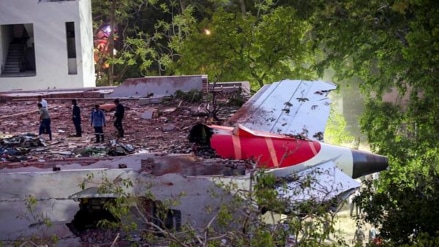Air India Crash Probe: Aviation expert Mark D Martin has called the preliminary findings of the Aircraft Accident Investigation Bureau (AAIB) into the Air India AI-171 crash “cryptic” and flagged several technical inconsistencies. Martin emphasised that the Ram Air Turbine (RAT) is typically only deployed in the event of an engine failure and raising questions about how and why the aircraft’s fuel switches were moved to the “cutoff” position.
“It is the initial report, and it is quite cryptic in many ways. It says a lot of points that don’t add up,” Martin noted. “If there were an engine failure, that is only when the RAT deploys. When the RAT deploys, there is only one course to restart the engine.”
Concerns over ignored FAA circulars
Martin further pointed out that incidents of fuel switches tripping to the cutoff position have occurred in the past. However, he expressed concern that Maintenance, Repair, and Overhaul (MRO) organisations often disregard FAA-issued Advisory Circulars unless they are accompanied by Airworthiness Directives (AD) or Service Bulletins (SB).
“There is an FAA AIB circular on this. Sadly, most MROs don’t take AIBs seriously. They only react to ADs and SBs,” he said, suggesting that past warnings might have been overlooked, potentially contributing to the disaster.
Air India plane crash
The Air India AI-171 flight, a Boeing 787-8 Dreamliner, crashed shortly after takeoff from Ahmedabad’s Sardar Vallabhbhai Patel International Airport on June 12. Bound for London’s Gatwick Airport, the aircraft carried 241 onboard including 229 passengers and 12 crew along with 19 fatalities on the ground. A total of 260 lives were lost.
According to the AAIB’s preliminary findings, both engines shut down within 90 seconds of takeoff, resulting in a fatal loss of thrust and rapid descent.
‘No pilot would cut fuel during rakeoff’
Martin ruled out pilot error, stressing that during takeoff, pilots are fully focused on forward instruments, not fuel switches located behind the throttle quadrant.
“As a pilot, SMS and Safety professional the two most critical phases of flight are the take off’s and landing, and during this, all attention is on flight instruments and hand flying the aircraft to about (usually) 2000ft then engaging the autopilot. Thrust Setting is manual (not autopilot/AUTO THROTTLE) and MAX TAKE OFF THRUST; and focus, attention is on continuing flight and flight controls, never on the throttle quadrant, since thrust is set to MAX TAKE OFF THRUST. From the AI 171 preliminary report, which will have a global ramification on all 787 operators, it is reported that the fuel valves/switches were moved to CUT OFF. It is highly unlikely that any pilot, especially during takeoff would want to meddle or fiddle around with switches behind the thrust levels. At best, you’d focus on raising the landing gear which is located in the front panel of the cockpit, or raise the flaps. The reason why the Fuel Valves/Switch was turned back to CUTOFF is something that needs to be investigated,” he stated.
Demands for full investigation
Martin called it “shocking” that the preliminary report made no reference to the cockpit camera footage, which should contain a complete record of the crew’s actions. “The 787 has a cockpit camera. The report makes no mention of it. That’s unacceptable,” he said.
He urged aviation safety regulators worldwide including the NTSB, FAA, EASA, DGCA India, and the UKCAA to treat this as a global aviation safety issue. “The NTSB, the FAA, EASA in addition to the AAIB need to investigate to the fullest as to why did the Fuel Switch to Cut Off, no pilot would be stupid to cut fuel to both engines during a phase when he needs engine power the most.” he adds.
Martin also highlighted the need to investigate the possibility of “Fuel Switch Runaway” due to digital or software malfunction.
“This crash is complex and must be investigated thoroughly and globally. The 787 is a software-driven aircraft. If a system glitch caused the fuel cut-off, all operators must act,” he warned.
The full investigation report is expected within 90 days.
